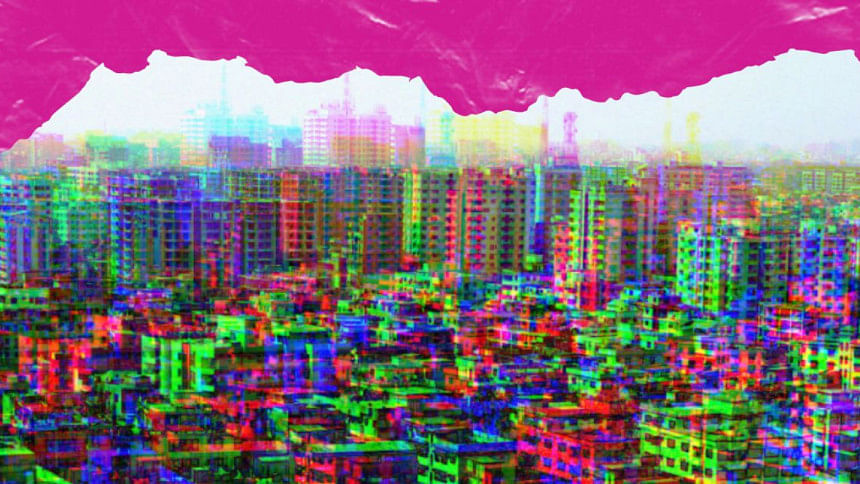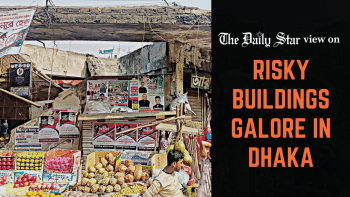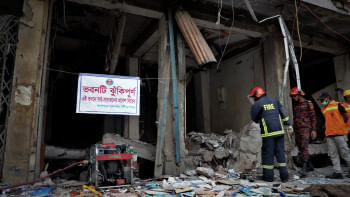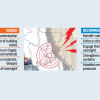Is Bangladesh prepared to face the wrath of an earthquake?

Hell broke loose when a powerful earthquake of 7.8 magnitude on the Richter scale hit Turkey and Syria killing around 59,000 people. Scores more were injured and around 0.87 million people were displaced. The infrastructure as well took a big hit with 6,589 buildings crumbling to the ground. The material damage has been estimated to be around $ 89.2 billion. The ramifications of this one earthquake on the two nations are broad-ranging and long-lasting.
It is estimated that there is an earthquake every 30 seconds somewhere on our Earth. But the bulk of those are too weak to be identified. A magnitude of 4.0 earthquake is only equivalent to about 6 tons of TNT explosives, but because the Richter scale is a base-10 logarithmic scale, the amount of energy released increases exponentially: A magnitude 5.0 earthquake is about 200 tons of TNT, 7.0 is 199,000 tons, and 9.0 is 99,000,000 tons of TNT. About 99 million tons of TNT is enough to wipe out just about anything, and is the equivalent of about 25,000 nuclear bombs, according to USGS.
Bangladesh sits where the three tectonic plates - Indian-Eurasia-Burma - meet. Currently, the Indian plate is moving in the north-east at a speed of approximately 6cm per year and the Eurasian plate is moving north at a speed of 2cm per year above the Indian plate. There are five major fault zones in and around Bangladesh, namely Bogura fault zone, Tripura fault zone, Shilong Plateau, Dauki fault zone and Assam fault zone. Thus, Bangladesh is a location of 13 earthquake prone areas, and Chattogram, Chattogram Hill Tracts, and Jaintiapur of Sylhet remain in extreme risk zones. In 2022, Dhaka, the capital of Bangladesh, with 30,093 residents per square kilometer was among cities with the highest population density in the world. And has been marked as one of the 20 cities most vulnerable to earthquakes in the world.
Rajuk has an area of 1,528 sq km under its jurisdiction. It includes almost 2.1 million buildings. Due to rapid expansion of Dhaka City, 65 percent of its area is soft land-filled, like Purbachal, Uttara 3rd Project, Jhilmil etc. Only 35 percent of Dhaka's area located on the southern part of Modhupur Gar which is composed of red and hard soil, developed almost 20 lakh years ago are the old and main part of Dhaka which is strong enough to resist mild to moderate earthquakes. Structurally, Bangabhandhu Sheikh Mujib Medical University (BSMMU), Dhaka University (DU), Jahangirnagar University, Jagannath University, Engineering Education Directorate, Public Health Engineering Directorate are the most vulnerable. Rajuk while permitting for building construction observes only the architectural component, but not the structural design, which is most relevant in the context of earthquake resilience. In a 2018 survey, Rajuk found that 94.76 percent of structures in Mirpur, Mohammadpur and Pallabi, 93 percent in Rampura, Motijheel and Khilgaon, and 89 percent in Dhanmondi do not meet the design and structural pre-requirements. There are almost 0.6 million five-or-more-storey buildings in Dhaka which are the prime targets of an earthquake disaster. Collapse of Rana Plaza in 2013 which killed at least 1,132 people and injured more than 2,500 is a brazen example of violations of existing rules and regulations related to building constructions contributing to human tragedy.
Ever since earthquake records have been compiled in this part of South Asia, seven strong earthquakes have hit us. In 1885 an earthquake of 7.1 scale occurred in Sherpur, Bogura. In 1762 an earthquake of 8.5 magnitude, resulted in the creation of the Saint Martin's Island in Bangladesh. The last great earthquake, the Assam earthquake, which scored 8.5 on the Richter scale, occurred in 1950, and was 780 miles from Dhaka. Experts opine that an earthquake of 7.0 scale comes after every 100 to 150 years, and an earthquake of 8.0 repeats every after 250 to 350 years. If that is true, then a heavy earthquake is visibly knocking at our door, ready to strike any moment.
There are two phases for earthquake disaster management. First is, pre-earthquake preventive measures. If Tk one is spent in prevention, that saves us Tk 10 when disaster strikes. It involves rules, regulations, strict monitoring and early signal system. Usually, there remains a time period of 20 to 60 seconds, when measures like switching off all electric, gas and water line can be arranged by built-in automated process. We should avoid use of blazed-bricks, and replace it with concrete-slab which is cheaper and gives more shock absorbing capacity during tremors. We should emphasise more on research on earthquake to develop appropriate locally adaptive technologies to early detect and promptly mitigate risks. National policies and programs require firm political commitments and accountability of the responsible authorities. The government does have guidelines in place and plans like the Bangladesh National Building Code (BNBC) 2015 to deal with the aftermath of an earthquake, but implementation on ground have always proved an abysmal failure. There are also guidelines to make existing risky buildings earthquake-resistant through 'retrofitting' method, which is effective and less costly. The BNBC-2015 has mandated that no house should be built without beams. But the rules are not followed.
The second phase is post-earthquake where we need to build capacity for prompt response, rescue and evacuation operations and appropriate treatment facilities in hospitals. We need to have earmarked facilities across the country to offer shelter to the homeless people after an earthquake. We should train a large number of volunteers and rescue teams. We need to widen our appallingly narrow roads to allow civil defence and fire fighting vehicles to easily navigate to the destination. Added to that, we need sophisticated technology and modern machineries to recover people from collapsed buildings. All medical facilities need have a contingency plan, ample manpower, ambulances, and medical stocks. There needs to be adequate coordination among various agencies who will act promptly after the earthquake. Mere 492 fire stations across country, with a meager 13,058 manpower in Fire Service and Civil Defence, are not adequate to tackle a major earthquake.
Though Rajuk is solely responsible to determine the earthquake vulnerability of buildings in the area under its jurisdiction, unfortunately in the last 12 years they have not prepared any list yet. In Bangladesh, we have almost 40 to 50 private facilities that have the capability to monitor building construction. It is time to engage them as a third party to support Rajuk, Chattogram, Khulna, Rajshahi Development Authority and city corporations.
For some years, many small tremors have signaled the imminent advent of a large-scale earthquake jolting us some time soon. If this occurs, then the question whether we are ready to cope with it and move relatively unscathed will be rendered useless. And unfortunately, the current answer is not very comforting. Recent quakes in Turkey and Syria sever an eye opener for us. A heartbreaking photo that appeared in the 'Prothom Alo' on 7 February, 2023 of a Turk holding the hand of his deceased daughter, trapped under the mammoth concrete slab, may just become the reality of our incapacity while facing the wrath of nature. The sooner we acknowledge our short-comings, and act, the better for our safety. We aspire to be a developed nation by 2041, but our hard-earned development and infrastructure like Padma Bridge, Jamuna Bridge, Karnaphuli Tunnel, and ambitious flyovers across the country will crumble to ruins in matter of seconds, if we do not take measures to protect us before it is too late.
Dr Zulfiquer Ahmed Amin is an expert in healthcare and hospital administration. He is the ex-Hospital Director of BSMMU and a freelance writer.

 For all latest news, follow The Daily Star's Google News channel.
For all latest news, follow The Daily Star's Google News channel. 












Comments